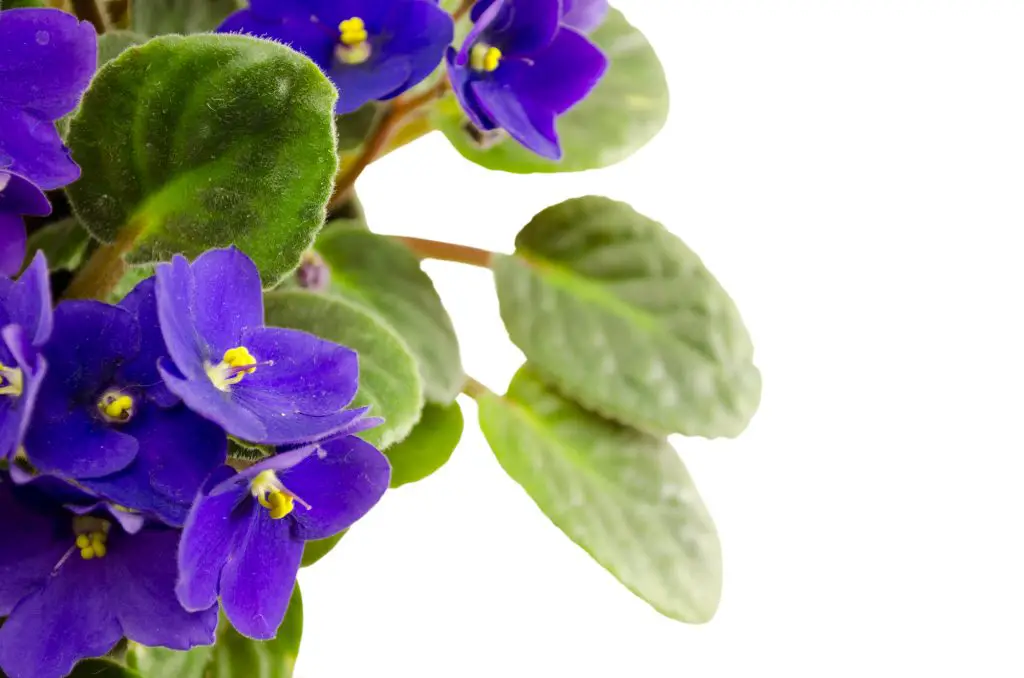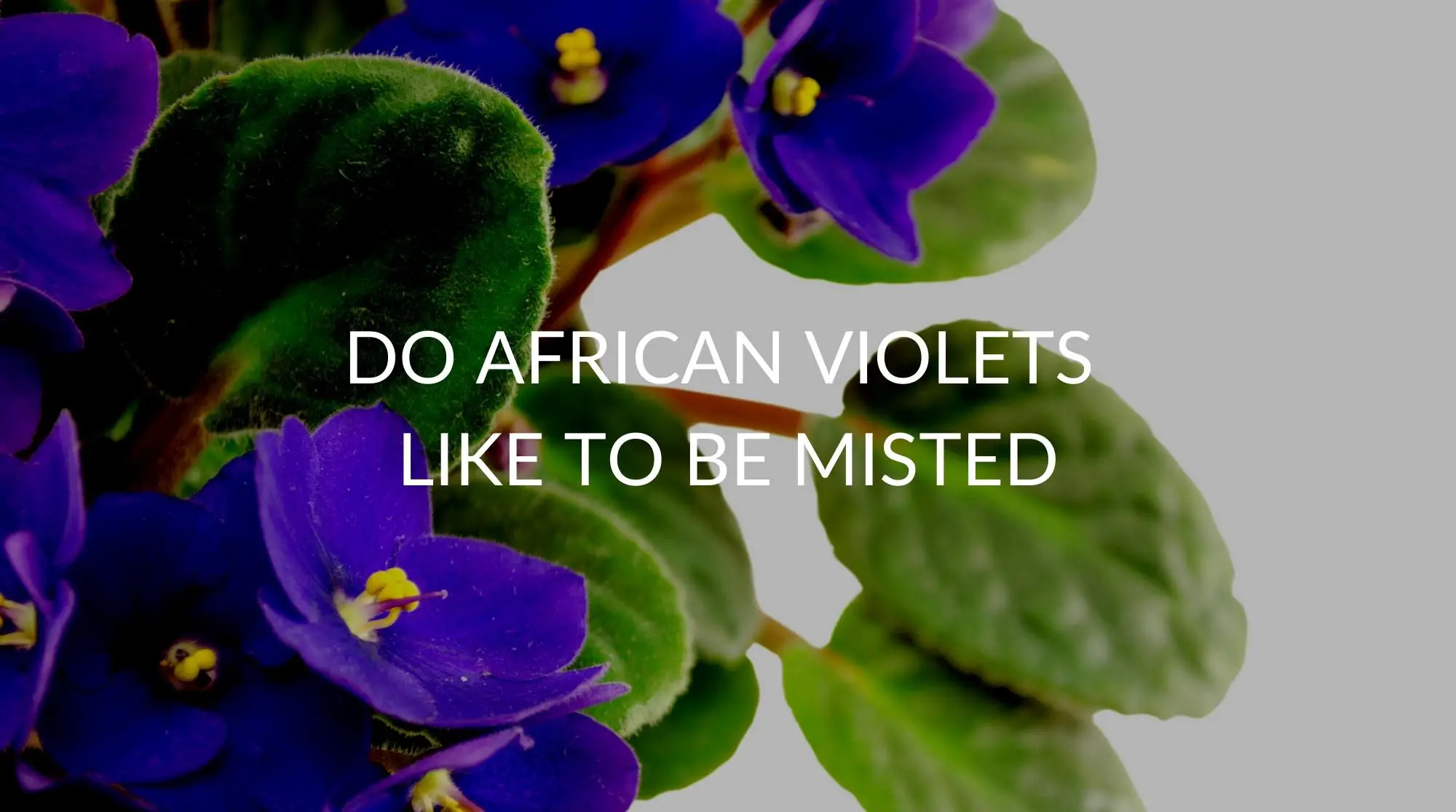African Violets come from tropical rainforests in East Africa, but presently they have become popular house plants among beginner and experienced green thumbs, and it’s for a good reason. They are generally comfortable in temperatures that are comfortable to us, so we can keep them indoors annually without a problem.
These violets also bloom all year long if cared for and loved for. They’re easy to take care of, as long as you pay mind to the tips found in this article.
Treat them well and don’t neglect them, and they’ll brighten up your home year-round, but don’t get discouraged if they go through dry spells. If the plant won’t bloom, it likely needs more sunlight. If the leaves are droopy and sad, it probably needs some water. If the leaves keep turning brown and the growth seems stunted, check the roots because they could be root bound.
Planting and gardening, indoor or outdoor, is a science and an art. Plants can be picky about their environment, down to the pH of the soil, the water temperature, and the pot they are in.
If your plants seem unhappy, see if a simple change of sunlight changes anything, check the roots to see if they’re crowded, and check the soil to make sure it’s not too dry or too wet.
When it comes to watering houseplants, when we get a new plant, we wonder how much, how often, and how to water them because each plant is so unique. Some plants like lots of water often, some like barely any water on rare occasions. In this short read, we will answer the question “do African violets like to be misted?” and more!
Do African Violets Like To Be Misted?
When it comes to misting, some plants enjoy it, some are impartial to it, and some won’t tolerate it for long. Most plants will enjoy a moderate misting, while others will thrive on misting alone. The African Violet, however, does not like to be misted as other plants do.
African Violets are susceptible to leaf damage caused by long-term exposure to misting or too much misting at once
If you’re curious whether African Violets like Coffee grounds, click here! . African Violets are prone to rot, so it’s imperative that you don’t overwater them and you plant them in well-draining soil and container. Give them ample and bright indirect light for best results.

Should You Mist African Violets?
Misting is not completely out of the question for African Violets, but it’s not advised. If your home is overly dry, it’s acceptable to mist your African Violets, but don’t overdo it because it can damage the leaves. If you do mist your African Violets, do it seldom, and do it lightly.
A better option for watering your African Violets is to water the soil directly, so you water it from the soil up. Some people water from the bottom up. This method is to allow the dirt and the roots access to water so the plant can “drink” as it pleases. This is the watering method that African Violets prefer.
Mist sparsely and water the soil directly. Generally, a light mist with room temperature water will do nicely, if you must.
How Often Should African Violets Be Misted?
Some plants thrive off of just misting, and dedicated gardeners and green thumbs will mist in the morning and the evening when the dew would fall. However, African Violets don’t need to be misted often, or they’ll face the risk of rotting, usually in the roots.
African Violets do not enjoy misting, but if you really think you need to mist your African Violets, it’s best to do it rarely and when the humidity is below 30%. Misting frequently or for an extended time can cause leaf damage to the plant, which then has a direct effect on the overall health of the plant.
How Do I Know My African Violets Need Water?
If the leaves on your African Violets are droopy and the soil is dry to the touch, it’s probably time to water them. If you’re unsure about this, you can poke your fingers into the dirt to gauge moisture levels. If the dirt is kind of moist or wet, you might want to check back later. If the dirt is dry to the touch, it’s time to water!
How Do I Save My Overwatered African Violets?
If you think you’ve overwatered your African Violets, it’s best to remove the plant from the pot and dry them out. Remove the soil so you can expose the roots. It’s important to remove any rotting roots and leaves from the plant. You can do this with your fingers since it’s easy to break the stems, or you can do it with shears if you prefer a less messy approach.
When repotting the violets, general potting soil or fast-draining potting soil are good choices. When planting, you should be careful not to bury them deeper than they were already planted and don’t cover the crown of the plant. Generally, African Violets don’t need a deep pot. 4 1/2 inches deep will suffice. Keep an eye on them, though, and don’t let them become root-bound.
Why Won’t My African Violets Bloom?
African Violets need light in order to bloom, so try to keep them near a window, just out of direct sunlight. African Violets’ leaves can burn in direct sunlight. It may also help to rotate the plant, so all leaves get sun.
African Violets tend to bloom more in higher humidity. Remember to repot them twice a year or more if they outgrow their pot, so they have room for root growth and the nutrients in the soil are replenished regularly.
Misting African Violets
Overall, African Violets can be picky plants, but they’re not difficult to please. They do best when all of their needs are met. As far as watering them, they prefer bottom watering, but a misting is acceptable in moderation and low-humidity levels.
African Violets are prone to rot, so it’s incredibly important not to over-water. Let the violets dry out in between waterings to make sure it doesn’t stunt and wither away with root rot.

